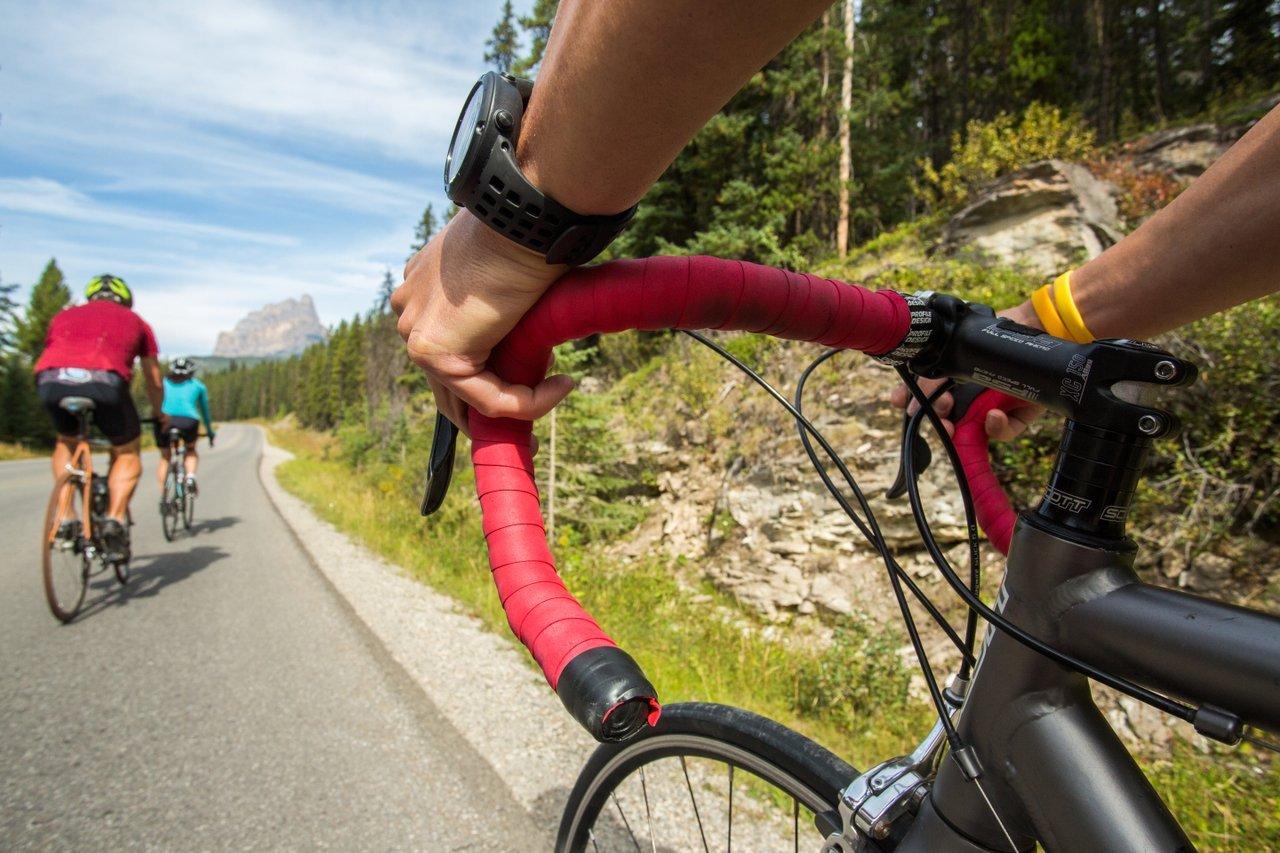
Cyclists on the Bow Valley Parkway in Banff National Park/Banff & Lake Louise Tourism, Paul Zizka
Cyclists and pedestrians will have two stretches of scenic roadways in Banff National Park almost to themselves this season.
Parks Canada has revealed that the Lake Minnewanka Loop Road will be closed to public vehicles every Monday to Thursday from May 1 to 20 but open to those who want to explore by bike or on foot. Once that pilot project ends, the Bow Valley Parkway will be closed to public vehicles beginning May 21. Both two-lane secondary roads will welcome people who must still share the road with some park and service vehicles.
The closures build on what happened along the parkway last summer when Parks Canada had to quickly control crowds destined for popular Johnston Canyon and promote physical distancing in the early months of COVID-19.
Cyclists made the most of the road closures. “We saw a lot of use and a lot of people on the parkway,” says Daniella Rubeling, visitor experience manager for the Banff Field Unit. “It was great to see.”
The Canadian Parks and Wilderness Society (CPAWS) was so intrigued by the new cycling opportunities on the parkway that it ran an online survey from Aug. 13 to Oct. 6 and got 3,120 responses. More than three-quarters of those who responded were cyclists, most were “extremely satisfied” with their recreation experiences, and most who had cycled the roadway before had a better time when vehicles were restricted.

Sarah Elmeligi from CPAWS cycles the Bow Valley Parkway/Sarah Elmeligi
“They felt more connected and safer,” says survey lead Sarah Elmeligi, national parks program coordinator for CPAWS Southern Alberta. “It was clearly a better experience.”
As the pandemic hit in 2020, Parks Canada shut down whatever it could across the country in mid-March. In Banff, it decided to keep the Bow Valley Parkway — from the Highway 93 South junction to the east end where it meets the Trans-Canada Highway — closed because of problems with crowds and physical distancing at the popular Johnston Canyon, which has at least seven pathway sections with narrow catwalks.
“This was a COVID mitigation that then turned into a visitor experience offer,” says Rubeling.
Based on feedback, Banff has tweaked this year’s offerings. The Lake Minnewanka option is new and people will have to park their vehicles at the Cascade Ponds day-use area.
For the Bow Valley Parkway, people must park in the town of Banff at the Fenlands Banff Recreation Centre or Banff Train Station instead of along the highway, and then cycle the Legacy Trail connector to reach the parkway. That approximately two-kilometre (1.2-mile) route “gives them an even longer cycling experience, but not too much more,” promises Rubeling. Roam Public Transit will take those who don’t bike to the parkway on Johnston Canyon Regional Route 9 starting May 21 for just a few dollars.
As well, the parkway is also closed to all traffic every night until June 25 from 8 p.m. until 8 a.m. — annual seasonal travel restrictions that allow wildlife to access the valley to mate, find food and give birth.

The Bow Valley Parkway/Highway 1A is a scenic route in Banff National Park/Sarah Elmeligi
All these decisions, Rubeling stresses, are subject to change as the pandemic continues to evolve. Park staff want to hear feedback this summer.
According to CPAWS, the Bow Valley Parkway has long been considered a road cycling destination, but last year it attracted people who’d never tried it before. “With the road closed to vehicles, it just exploded in popularity,” says Elmeligi. “It was popular with cyclists, but also with people who were walking and taking their families out.”
She’s keen to see what the parkway’s future looks like and her survey showed that “Canadians want to be engaged in these conversations.” When asked whether people supported future restrictions, most did and voted for daily closures.
One point that jumped out at Elmeligi was that a handful of respondents said people with limited mobility still need to be able to get close to Johnston Canyon because the first part of the trail is accessible: “It’s not very often that you have 1.1 kilometres of truly accessible trail that leads to a truly stunning waterfall in a national park.” She hopes the Roam bus will keep this option open for people.
“Surveys like this should continue and hopefully this summer we can collect more data,” says Elmeligi, who hopes to officially release her report in April.

 Support Essential Coverage of Essential Places
Support Essential Coverage of Essential Places




Add comment